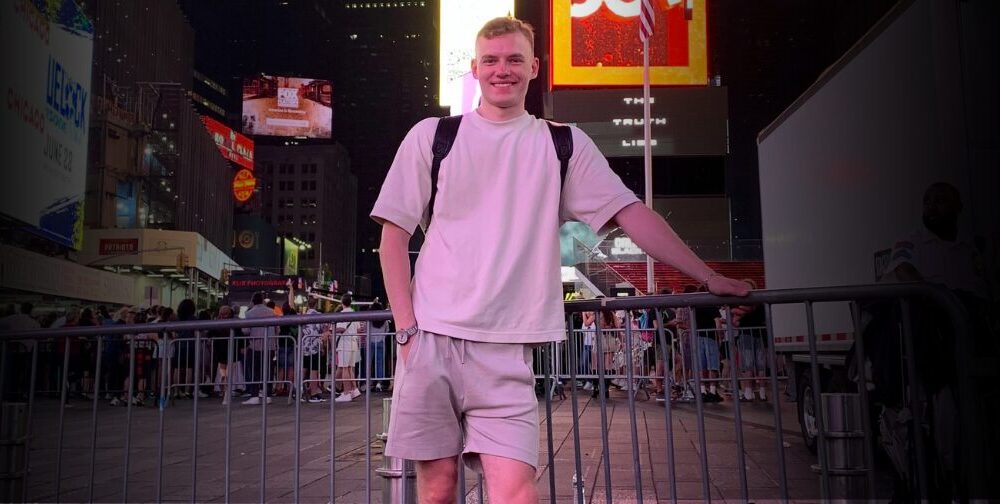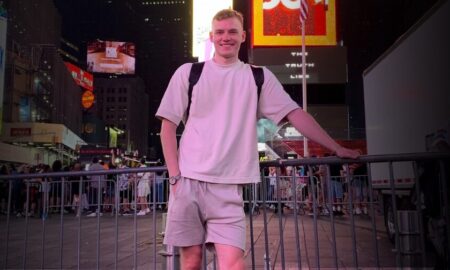Somewhere between bingeing episodes of Black Mirror and attending yet another hybrid tech event, I realized something: the next big disruption isn’t coming from screens. It’s coming from the physical spaces around us—and it’s being powered by immersive lighting and spatially-aware displays.
On a recent weekend retreat (half work, half “let’s see if I remember how to camp”), I road-tested two gadgets I thought would be fun. Turns out, they sparked a conversation about how lighting and projection tech adre becoming key players in the real-world side of tech innovation.
From 3D visuals floating in thin air to motion-triggered LEDs that respond to your every step, these tools aren’t just gimmicks anymore. They’re quietly shaping the future of retail, live events, outdoor experiences, and yes—even cybersecurity.
- From Wow to Why: The Rise of 3D Hologram Fans by Innaya.Store
Let’s start with the showstopper.
At a recent outdoor startup networking event in Sedona, someone pulled out a 3D hologram fan and loaded a spinning logo in mid-air. It wasn’t tethered to a screen, and it wasn’t projection mapping. It was just… floating.
That someone was me.
I brought along a unit from Innaya.Store, a brand that’s been making serious waves in the experiential tech scene. Their 3D hologram fans use high-speed LED blades to create full-motion visuals in mid-air—logos, animations, countdowns, you name it. They’ve gone viral at trade shows and been spotted at brand pop-ups in LA, Tokyo, and even music festivals in the desert.
But beyond the wow factor, there’s a serious “why” here. We’re moving into a world where physical attention is harder to grab. Our eyes skip over static screens, banners, even mobile ads. Holograms, however? They make people stop. Record. Share. Engage.
Marketers are already integrating them into omnichannel strategies. Retailers are experimenting with dynamic content that adapts by location or audience. And early adopters are even pairing these with geofencing or AI for real-time content adaptation. It’s not just cool—it’s conversion-driving.
- Reactive Lighting as Infrastructure: SmartTrail Tech by GripLux
After the hologram hype, I figured that would be the highlight of my trip. But the second surprise came from something even smaller: a set of motion-activated LED trail lights from GripLux.
They look simple—clip-on, solar-powered, about the size of a protein bar. But functionally? They’re brilliant.
As I moved around the campsite, they lit up like they’d been waiting for me. No switches. No apps. Just intuitive design. I strung them along a path to our tent and cooking area, and they provided just the right amount of ambient lighting—clean, responsive, and sustainable.
Now think bigger.
GripLux’s technology has broader implications for smart cities, urban planning, and even security. These micro-light systems can guide foot traffic, enhance wayfinding in low-light areas, or be integrated into crowd management systems. And because they’re solar-powered and standalone, they’re scalable in a way that doesn’t require major infrastructure changes.
This isn’t just about avoiding stubbed toes—it’s about building responsive environments that adapt to human movement.
The Bigger Picture: Physical Tech Is Having a Moment
What’s exciting about tools like Innaya’s 3D fans and GripLux’s trail lighting is that they’re part of a much larger trend: the merging of digital interactivity with the physical world.
We used to think of “smart” as something confined to a screen. Now it’s spilling into streets, stores, and wilderness trails. It’s giving brands, event planners, and even city officials new tools to engage audiences in real-time, in real space.
And for investors and innovators? That means opportunity.
- Opportunity to create immersive hybrid experiences
- Opportunity to build modular infrastructure for smart environments
- Opportunity to design systems that respond intuitively to human behavior
We’re not just digitizing the world—we’re making the world responsive.
Final Thought: The Physical Is the New Digital Frontier
We’ve spent decades designing digital spaces to feel real. Now we’re designing real spaces to feel magical.
And companies like Innaya.Store and GripLux are quietly leading that charge—not through hype or billion-dollar launches, but with thoughtfully engineered tech that feels one step ahead of the user.
If you’re in the business of future-proofing environments—whether it’s for events, retail, tourism, or smart cities—keep an eye on this space.
Because the next interface might not live on your phone or wrist. It might just float in front of your face… and light your way there.



































